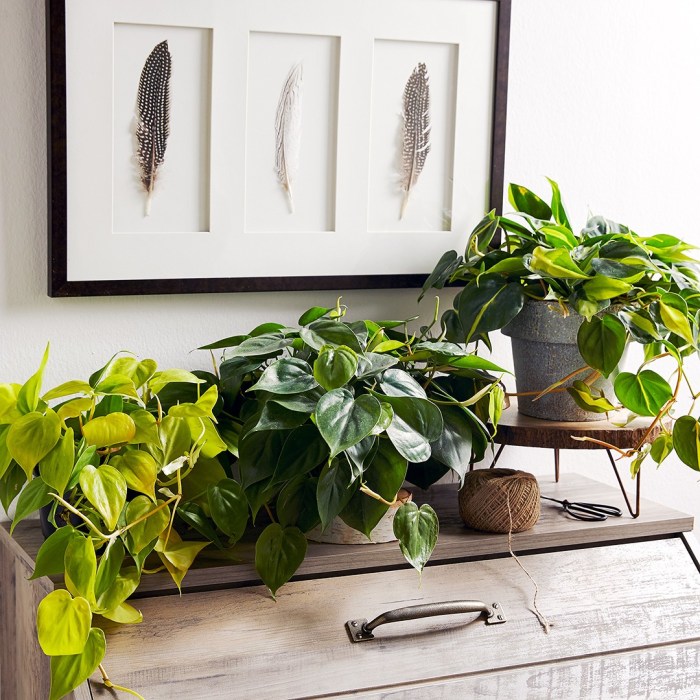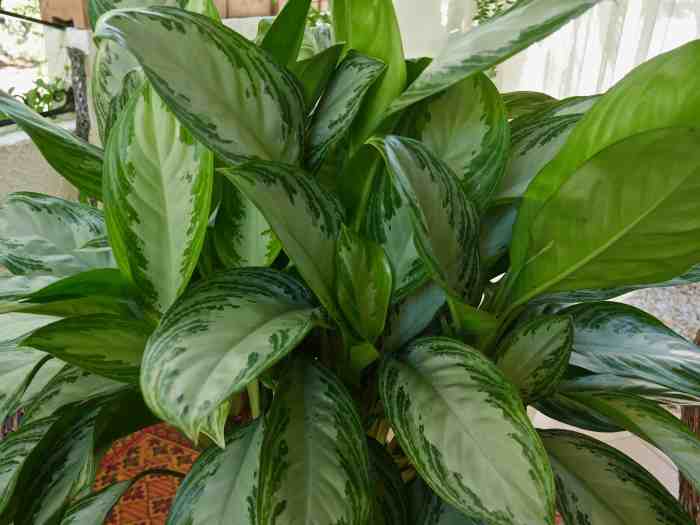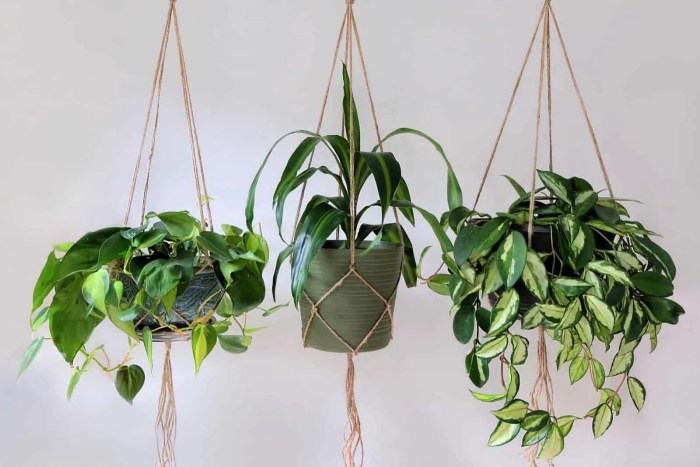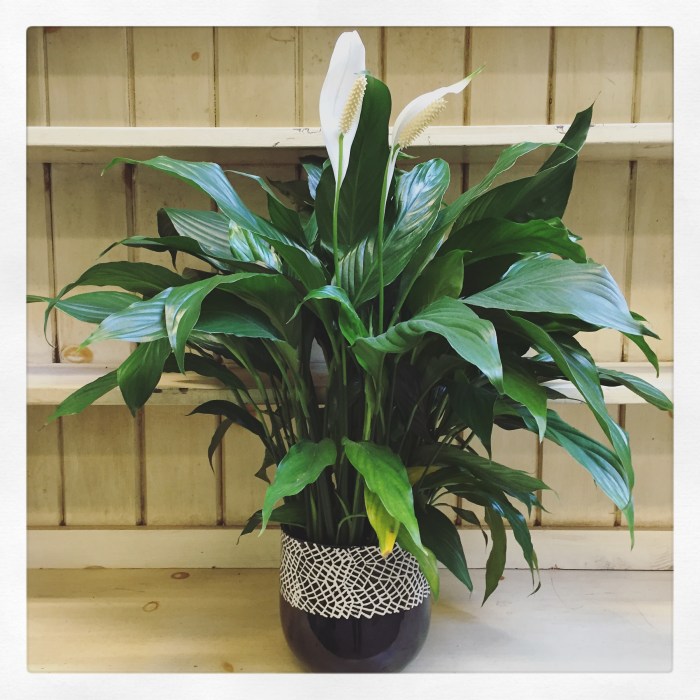Hanging plants good in low light – Unleash the beauty of nature within your home with hanging plants that thrive in low light. These versatile additions bring a touch of greenery and tranquility to any space, transforming your indoor environment into a sanctuary of natural elegance.
Discover the unique characteristics, care requirements, and aesthetic possibilities of hanging plants that excel in low-light conditions. Embrace the joy of indoor gardening and create a thriving oasis within your own walls.
Plant Profiles
When it comes to adding a touch of greenery to your home, hanging plants are a great option. They’re easy to care for and can add a touch of elegance to any room. But if you don’t have a lot of natural light, you may be wondering which hanging plants are best suited for low-light conditions.
Here are a few of the best hanging plants for low light:
Pothos (Epipremnum aureum)
- Pothos is a popular choice for hanging plants because it’s easy to care for and can tolerate low light conditions.
- It has heart-shaped leaves that come in a variety of colors, including green, yellow, and white.
- Pothos is also a good choice for purifying the air.
Spider Plant (Chlorophytum comosum)
- Spider plants are another popular choice for hanging plants because they’re easy to care for and can tolerate low light conditions.
- They have long, thin leaves that are variegated with green and white.
- Spider plants also produce small white flowers that bloom in the spring.
ZZ Plant (Zamioculcas zamiifolia)
- ZZ plants are a low-maintenance plant that can tolerate low light conditions.
- They have thick, waxy leaves that are dark green in color.
- ZZ plants are also drought-tolerant, so you don’t have to worry about watering them too often.
Snake Plant (Sansevieria trifasciata)
- Snake plants are a popular choice for low-light conditions because they’re very easy to care for.
- They have long, sword-shaped leaves that are dark green in color with light green stripes.
- Snake plants are also drought-tolerant and can tolerate being neglected for long periods of time.
Cast Iron Plant (Aspidistra elatior)
- Cast iron plants are a low-maintenance plant that can tolerate low light conditions.
- They have large, dark green leaves that are very durable.
- Cast iron plants are also drought-tolerant and can tolerate being neglected for long periods of time.
Light Requirements and Placement

Hanging plants in low-light environments have specific light requirements to thrive. Understanding these requirements and providing appropriate placement within a room is essential for their health and aesthetic appeal.
Low-light hanging plants prefer indirect, bright light that mimics their natural habitat under the forest canopy. Direct sunlight can scorch their leaves, leading to discoloration or burns. Therefore, it’s crucial to avoid placing them in areas with excessive sun exposure.
Window Orientation and Distance, Hanging plants good in low light
When selecting a location for your hanging plants, consider the orientation of the windows in your room. North-facing windows provide the most consistent low light throughout the day, making them ideal for these plants. East- and west-facing windows offer brighter light during specific hours, so place your plants a few feet away from the window to avoid direct sunlight.
Artificial Lighting
In rooms with limited natural light, artificial lighting can supplement and extend the daylight hours for your hanging plants. Fluorescent or LED grow lights provide the necessary spectrum of light for plant growth. Position the lights a few inches above the plants and adjust the duration based on the specific plant’s needs.
Watering and Humidity

Watering schedules for hanging plants in low-light conditions should be adjusted to their reduced growth rates. Allow the soil to dry out slightly between waterings, as overwatering can lead to root rot.Humidity is also crucial for low-light hanging plants, as it helps them absorb moisture from the air.
Maintaining adequate moisture levels can be achieved through the use of humidifiers or pebble trays filled with water. Place the pebble tray beneath the plant, ensuring the pot is not submerged in water. As the water evaporates, it increases the humidity around the plant.
For those with limited natural light, hanging plants offer a vibrant solution. Consider incorporating fence hanging planters bunnings to elevate your indoor greenery. These versatile planters allow you to display plants vertically, maximizing space and creating a lush ambiance. By selecting low-light tolerant species, you can enjoy the beauty of greenery even in dimly lit areas.
Fertilization and Maintenance

Hanging plants in low light require a specific fertilization schedule to thrive. Fertilize them monthly during the growing season (spring and summer) with a balanced liquid fertilizer diluted to half strength. During the fall and winter, reduce fertilization to once every two months.Pruning
Hanging plants can brighten up any space, even those with low light. Whether you’re looking for a stylish way to display your greenery or you’re just trying to find a way to add some life to a dark corner, macrame hanging baskets from Bunnings are a great option.
These baskets are made from durable materials and come in a variety of styles, so you can find one that fits your décor. Plus, they’re easy to hang and can be used to display a variety of plants, including those that thrive in low light conditions.
is essential to maintain the shape and size of hanging plants. Regularly remove dead or yellowed leaves, and trim overgrown stems to encourage new growth. Repotting is necessary when the plant becomes rootbound. Choose a pot that is slightly larger than the current one and use a well-draining potting mix.Common
problems affecting hanging plants in low light include yellowing leaves, caused by overwatering or nutrient deficiency, and pests such as aphids or mealybugs. Treat pests with insecticidal soap or neem oil.
Hanging plants can be a great way to add some greenery to your home, even if you don’t have a lot of natural light. There are many different types of hanging plants that do well in low light, such as pothos, philodendron, and spider plants.
If you’re looking for a hanging plant to add to your porch, there are many options to choose from, including hanging plants for porch . Be sure to choose a plant that is well-suited to the amount of light your porch receives.
Aesthetic Considerations: Hanging Plants Good In Low Light

Incorporating hanging plants into interior design schemes offers a unique opportunity to add greenery and vibrancy to any space. These plants can transform dull corners, add a touch of nature to modern interiors, and create a sense of tranquility and relaxation.
When choosing hanging plants for your space, consider the overall design style and color scheme. For example, trailing plants like pothos or philodendrons can add a lush, cascading effect to a minimalist living room, while succulents or air plants can complement a bohemian or eclectic aesthetic.
Creating Eye-Catching Arrangements
To create visually appealing hanging plant arrangements, experiment with different heights and textures. Combine plants with varying leaf shapes and sizes to add depth and interest. You can also use macrame hangers or decorative pots to enhance the overall look.
Consider the placement of your hanging plants to maximize their impact. A single statement plant can create a focal point in a large room, while a group of smaller plants can add a touch of greenery to a smaller space.
By carefully considering the aesthetic considerations, you can create stunning hanging plant displays that elevate the ambiance of any room.
Final Thoughts
Incorporating hanging plants into your home not only enhances its beauty but also creates a sense of peace and well-being. These low-maintenance companions bring the outdoors in, purifying the air and adding a touch of nature’s charm to your everyday life.
Embrace the beauty of hanging plants and transform your living space into a sanctuary of tranquility and natural elegance.
Helpful Answers
What are the best hanging plants for low light?
Some popular low-light hanging plants include pothos, spider plants, ZZ plants, snake plants, and peace lilies.
How often should I water hanging plants in low light?
Water hanging plants in low light less frequently than those in brighter conditions. Allow the soil to dry out slightly between waterings.
How can I increase humidity for hanging plants in low light?
Misting hanging plants regularly or using a humidifier can help increase humidity levels.